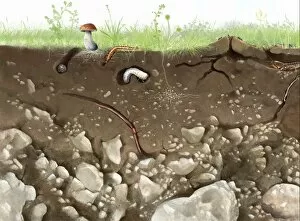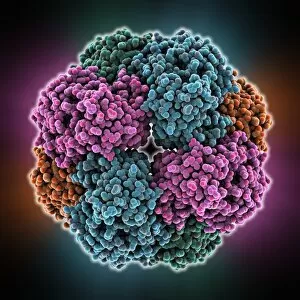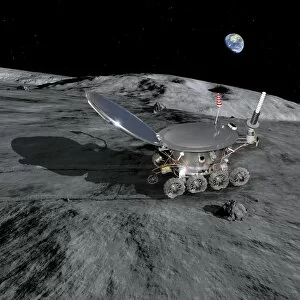Soil Science Collection
"Soil Science: Unveiling the Secrets of Earth's Foundation" Delving into the depths of soil science, we embark on a journey that spans centuries and continents
All Professionally Made to Order for Quick Shipping
"Soil Science: Unveiling the Secrets of Earth's Foundation" Delving into the depths of soil science, we embark on a journey that spans centuries and continents. From Olivier de Serres' groundbreaking work in Les Merveilles de la Science to NASA's cutting-edge technology aboard the DC-8 Airborne Science platform, this captivating field has captivated minds throughout history. In 1870, Olivier de Serres laid the foundation for soil science with his engravings, enlightening us about its intricate composition and importance. Meanwhile, SEM C015/5767 reveals clay particles under high magnification, showcasing their unique structure and role in sustaining life. Fast forward to February 20th, 1998 - NASA's DC-8 Airborne Science platform soars against a backdrop of an endless dark blue sky. This former airliner turned "dash-72" takes flight over the rugged Sierra Nevada Mountains. As it banks right near Lone Pine, California, snow-capped peaks glisten below while scientists onboard study soil samples collected from these very mountains. The DC-8 continues its aerial exploration above Palmdale Airport in California; gracefully maneuvering through left banking turns as it collects invaluable data on our planet's foundation. Finally touching down at Edwards Air Force Base after a successful mission – this airborne laboratory becomes a hub of scientific discovery. With each flight over snow-covered Sierra Nevada Mountains or Mint Canyon near San Gabriel Mountains of California, the DC-8 uncovers hidden secrets buried within our soils. These flights provide crucial insights into soil structure and fauna that shape ecosystems worldwide. Amidst all these remarkable endeavors lies another marvel – Carbamoylsarcosine amidase enzyme. This enzyme plays an essential role in breaking down organic compounds found within soils; unlocking nutrients vital for plant growth and nourishment. As we gaze upon artwork depicting soil structure and fauna intertwined intricately beneath our feet, we realize the immense complexity and beauty of this hidden world.











